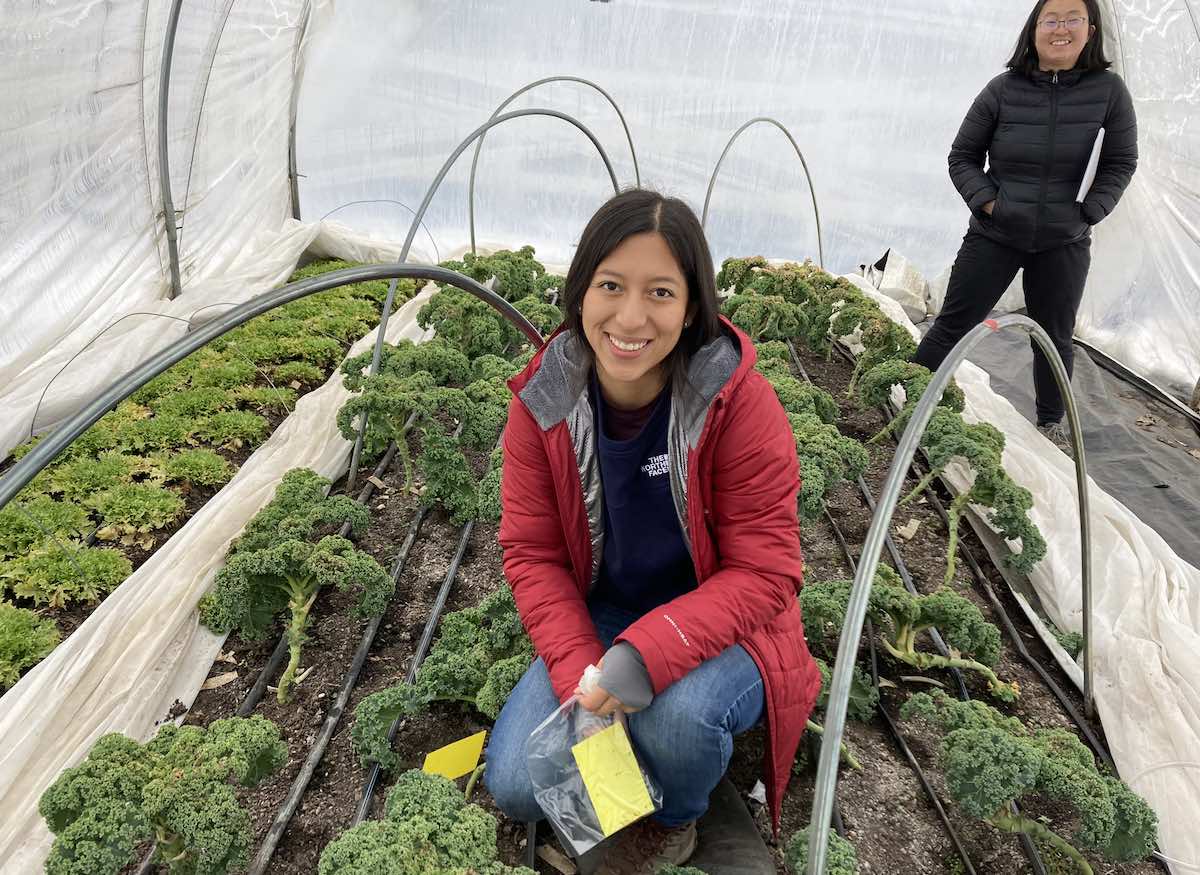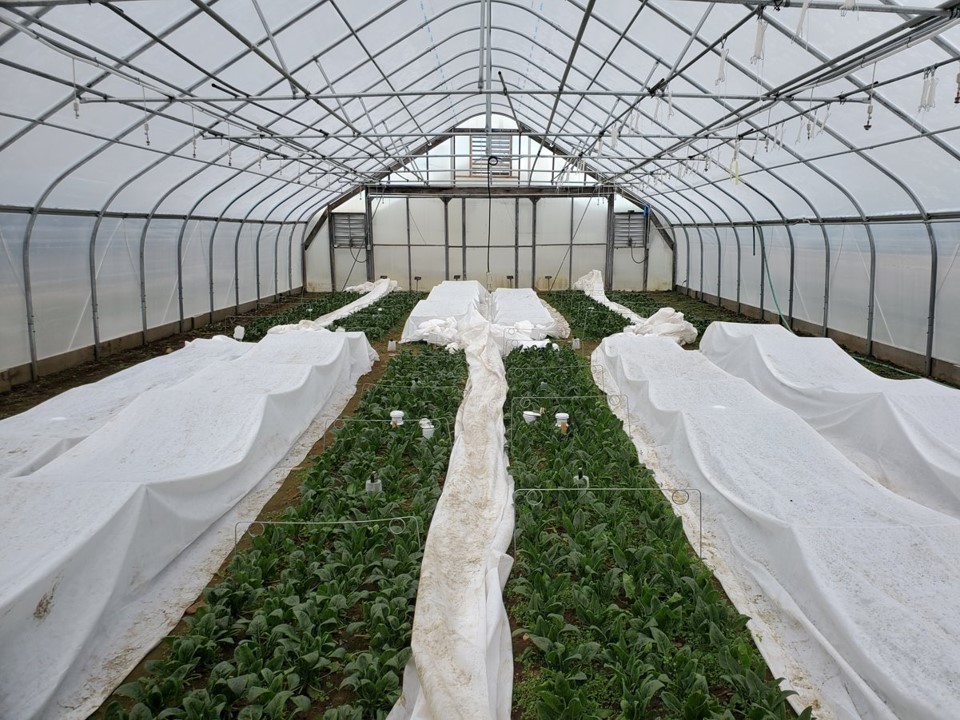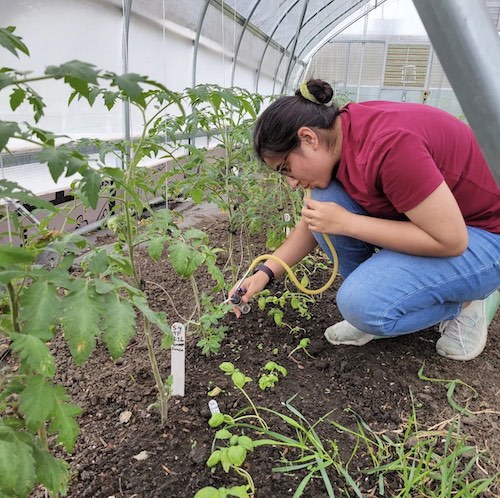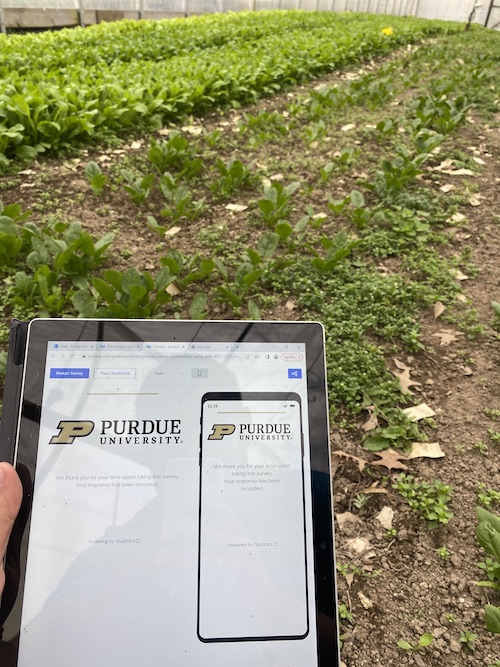Research
Objective 1: Describing the high tunnel environment
The goal for this objective is to identify insect complexes encountered by high tunnel producers in different growing regions (urban vs. rural) and varying in crop composition (simple vs. diverse)
Starting in Oct 2022, we initated monthly surveys at 40 farms across three U.S. states to describe the common crops, pests (including weeds and arthropod pests), and beneifical arthropods (predators, parasitoids, and pollinators) present under high tunnels. We also deployed weather stations a each site to provide detailed information on the growing conditions present at farms that varied in landscape type (rural vs. urban) and growing zones. We hope to use this information to predict sources of pest outbreaks. from our crop This research is currently ongoing and will terminate in Oct 2024.Funded by NIFA-SCRI 2021-07737
Objective 2: Regulating temperature to improve crop production
The goal of this objective is to determine the consequences of seasonality for high tunnel enviroments that impact horticultural and pest management outcomes.
Installing row covers for winter production of leafy greens is common across high tunnel farms to prevent frost damange. However, how these covers are managed throughout the season is variable. In the afternoon when temperatures are the warmest, many growers physically remove the covers to prevent overheating then recover the crops in the evening to prevent frost damage. This form of “active management” is time consuming compared to “passive management” where crops are either continullay covered or uncovered. Our team will determine the value of active vs. passive management for spinach and strawberry winter production in terms of yield and cost.Funded by NIFA-SCRI 2021-07737
Objective 3: Biological control of arthropod pests
The goal of this objective is to evaluate the efficacy and compatibility of biological control in high tunnels
Biological control is a key component of effective integrated pest management programs. There are many tools, products, and recommendions for biological control for many crops. Our team has initiated several research projects to evaulate which of these tools are effective and practical to high tunnel producers.
Project 1: Using molecular tools to determine predator efficacy.
Each month, we collected naturally occurring and intentially released predators from 40 high tunnel sites across three geographic regions. We will scan the gut contents of these predators to identify pest DNA. Using this approach, we can determine which resident predators are feeding on pest populations, and confirm that predators released for augmentative biological control are able to locate and feed on target pests.Project 2: Identifying an effective ecombination of predators, companion plants, and organic products for aphid management
Aphids are common and damaging pests of many crops grown under tunnels throughout the year. During the Winter of 2022-23, we conducted several field and lab experiments to determine which natrual enemies and spray products are most effective for potato aphid and green peach aphid management on spinach in winter conditions. Our goal is to identify which combination of predators and spray products are most effective and compatible for aphid management during winter. We will expand this research duing the 2023 summer to determine how weeds and companion plants influence pest presence and services by natrual enemies to improve tomato production.Project 3: Improving tools and recommendatoins for entomopathogenic nematode application for pest management
Using entomopatogenic nematodes (EPNs) can be an affordable and effective option for management of pests that dwell in the soil for all or part of their lifecycle. EPNs are available for fungus gnat, thrips, grub, and flea beetle management, but it is unclear how effective these products are under high tunnel soils. In addition, it is also unclear which native or naturally occuring EPNs are present in high tunnel soils that may be contributing to pest management. Current projects in this objective are to determine native EPN diversity in the soil at several sites across Indiana and to determine efficacy and persistence of commercial EPN products for control of high tunnel pests.Funded by NIFA-SCRI 2021-07737
Objective 4: Economic tools for high tunnel production
The goal of this objective is to create economic tools to support specialty crop production in high tunnels
Our team is conducting several projects to determine which crop production and pest management methods are cost effective for high tunnel producers. First, our goal is to develop a bioeconomic model for aphid management to determine the economic-optimal pest density beyond which growers should spray to avoid economic damage and below which growers should rely on biological control by natural enemies. Our second objective is to develop a calculator that includes costs and returns on farms that utilize biocontrol vs. chemical pest management so growers can determine which pest management option suits their needs. We will also provide recommendations on tools to organize finances and improve farm profitability.Funded by NIFA-SCRI 2021-07737